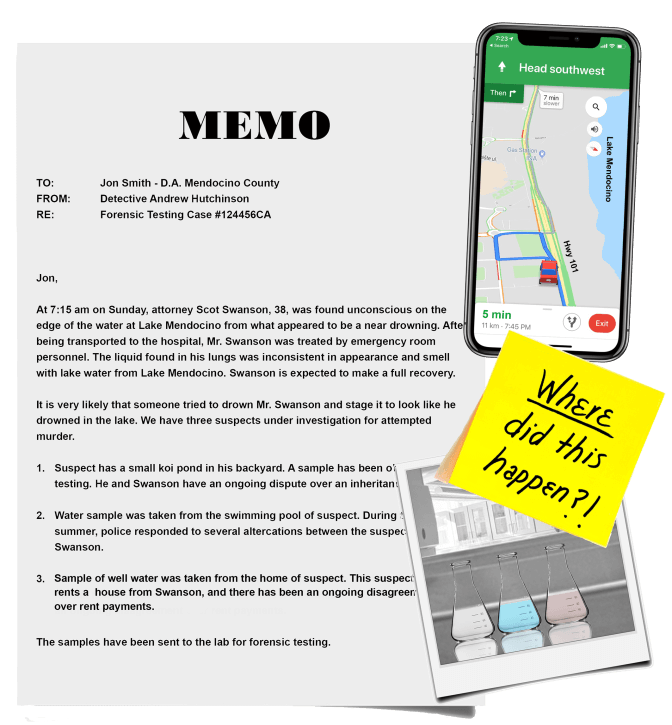
Introduction
Fresh water sources all contain an array of metal ions from natural and artificial sources. Common natural sources are sodium chloride, magnesium fluoride, calcium carbonate (limestone), and magnesium carbonate. The term “hard water” refers to the amount of metal ions in water. Hard water has a higher concentration of metal ions than soft water.
Ionic solids commonly dissolve in water to various degrees according to this general equation:
These equations are sometimes called dissociation equations. Since most water sources contain mixtures of ions, they will conduct electricity. The conductivity of the water samples depends on the concentration of ions in the sample.
In this experiment, you will measure the conductivity of water from the victim’s lungs. Then you will compare it to the conductivity of various water sources from different geographic locations. From the data, you should be able to propose a location where the victim almost drowned.
Objectives
- Analyze and interpret conductivity data to identify the source of a sample of water using patterns of physical and chemical properties of known bodies of water.
- Use mathematical representations to determine the concentration of ions in a water sample.
- Communicate technical information about the process used to identify the source of a water sample using patterns of physical and chemical properties.
- Explain what causes variations in the conductivity of water samples from different sources.
- Explain how forensic science uses digital tools to address the needs of modern civilization.
Sensors and Equipment
This experiment features the following sensors and equipment. Additional equipment may be required.
Ready to Experiment?
Ask an Expert
Get answers to your questions about how to teach this experiment with our support team.
- Call toll-free: 888-837-6437
- Chat with Us
- Email support@vernier.com
Purchase the Lab Book
This experiment is #2 of Forensic Chemistry Experiments. The experiment in the book includes student instructions as well as instructor information for set up, helpful hints, and sample graphs and data.



